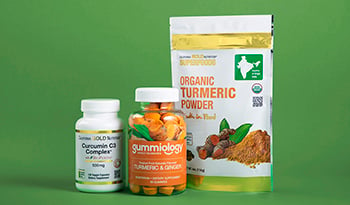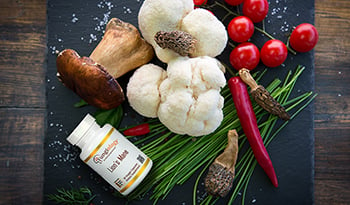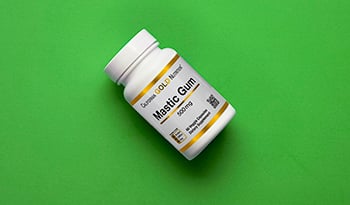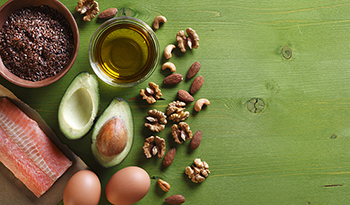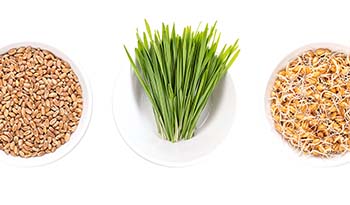Az aminosavak végső útmutatója

Az aminosavak a fehérje építőkövei, és létfontosságúak a különböző testi funkciókhoz. Fehérje nélkül az emberi test nem lenne képes úgy működni, ahogy működik. Minden biokémiai folyamatot, amely az élet fenntartása érdekében történik, fehérjehajt végre.
Az emberi test nemcsak képes az aminosavakat különböző célokra felhasználni, hanem újrahasznosítani is. A szervezet nagyon hatékonyan bontja le a régi fehérjéket aminosavakká, így újra felhasználhatók új fehérje előállítására.
A test fehérjében található 20 aminosav közül kilenc (9) „esszenciális” aminosavnak tekinthető. Ezeket elengedhetetlennek tekintik, mert az emberi test nem képes belsőleg előállítani őket, és ezeket az étrendben kell fogyasztani. Ennek eredményeként a kiegyensúlyozott étrend elengedhetetlen az általános egészség szempontjából.
Az első három aminosav, amelyet ki kell vennünk étrendünkből, a három BCAA (elágazó láncú aminosavak), amelyeket valin, izoleucin, leucinnéven ismerünk. A másik hat aminosav a hisztidin, lizin, metionin, fenilalanin, treonin, triptofán. Ezeket részletesebben megvitatjuk, valamint azt, hogy mindegyikük milyen szerepet játszik egészségünkben és jólétünkben.
Valin, izoleucin, leucin (BCAA)
AValin, Izoleucin és leucin elágazó láncú aminosavak (BCAA) néven ismert, ami molekulaszerkezetük „elágazó” természetére utal. A kutatók azt találták, hogy a BCAA-kiegészítés segíthet az izomfehérje szintézisében, a sovány izomnövekedésben, támogatja az izmok helyreállítását és csökkenti az izomfáradtságot, különösen edzés után.
További előnyök a következők:
- Javítsa az álmatlanság és a szorongás tüneteit
- Étvágycsökkentő
- Az immunrendszer szabályozása
- Segítség az izomszövet helyreállításában
- Növelje a testmozgási állóképességet
A BCAA-k természetes forrásai közé tartozik a vörös hús, tejtermékek, hüvelyesek, dió, gabonaés magvak.
A BCAA-k javasolt adagja körülbelül 2-4 gramm óránként edzés közben és közvetlenül a gyógyulási időszak alatt.
hisztidin
A hisztidin több molekula prekurzora, és számos funkciót lát el a szervezetben. A hisztidin egyik funkciója az, hogy nélkülözhetetlen helyet foglal el a hemoglobin és a mioglobin néven ismert fehérjében. A hemoglobin és a mioglobin egyaránt olyan fehérjék, amelyek felelnek az oxigén megkötéséért és az egész testben történő szállításáért, ahol szükséges.
A mioglobin fehérje felel az oxigén szállításáért és az izmokba történő szállításáért, míg a hemoglobin felelős a vérben lévő oxigén szállításáért a test többi részébe. A hemoglobinban és a mioglobinban jelen lévő hisztidin elősegíti stabilizálódását, valamint az oxigénhez való kötődési képességüket.
A test a hisztidint hisztaminná is átalakíthatja, egy olyan molekulává, amely minden szövetben jelen van. A hisztamin az a molekula, amely az elsődleges bűnös az allergiás reakciók kiváltásában, mint például a csalánkiütés és bizonyos allergénekre adott válaszként tüsszentés. A hisztamin szerepet játszik a bélrendszerben is, és elősegíti a savszekréció stimulálását a gyomorban. Orvosa előírhat egy „antihisztamint” az allergia és a savas reflux tüneteinek enyhítésére.
Néhány hisztidinben gazdag élelmiszer: tojás, marhahús, bárány, bab, egész gabona, sajt, sertéshús, csirke, szója, pulyka, magés dió. A hisztidin megtalálható a legtöbb tejsavóban és vegán fehérjeporban is.
L-lizin
L-lizin, mint a többi aminosav, számos funkcióval rendelkezik a szervezetben, de a legjelentősebb két funkciója a DNS-ünkben és a kollagénlétrehozásában. A lizin segít megakadályozni a DNS károsodását vagy negatív hatását.
L-lizin szintén fontos a kollagén létrehozásában, és csak akkor működik, ha megfelelő C-vitamin van jelen. A kollagén a csontjaink, ereink, szövetünk, szemünk, vesék és egyebek építőköve. Ezenkívül kollagénre van szükség ahhoz, hogy a fogak szorosan a helyén tartsák. A kollagén létrehozásának folyamatában több lépés van, minden lépés arra összpontosít, hogy erősebbé vagy rugalmasabbá tegye. Kollagén nélkül nem tudnánk szerkezetileg támogatni testünket. Fontos az egészséges, erős és tartós szövet- és szervek fejlődéséhez.
Sokan az L-lizin-kiegészítésre is támaszkodnak, hogy megakadályozzák a vírusfertőzések kitörését, például a HSV vagy a Herpes Simplex vírus okozta kitöréseket. A vizsgálatok szerint napi 3000 mg-os dózis szükséges a fertőzés elnyomásához.
Az L-lizinban gazdag élelmiszerek közé tartozik a hal, darált marhahús, csirke, szójabab, azuki bab, vesebab, sötétbab, tej, hasított borsó és lencse.
Metionin
A metionin szerves szerepet játszik a szervezetben található különböző hormonok és molekulák létrehozásában, különösen szerepet játszik az S-adenozil-metionin vagy SAMenevű molekula szintézisében. A SAMe a metionin és az ATP (adenozin-trifoszfát) kombinációjából képződik, amely a test fő „energiamolekulája”. A SAMe szerepet játszik a test különböző részein, és úgy gondolják, hogy az agy számára is előnyös. Patkányokon végzett tudományos vizsgálatok kimutatták, hogy a SAMe alkalmazása enyhe antidepresszáns hatásokat eredményezhet.
Ezenkívül SAMe szükséges olyan hormonok létrehozásához, mint a norepinefrin és az epinefrin. Mindkettőnek különböző hatása van a testre, az epinefrint inkább a „harc vagy menekülés” hormon néven ismert, amelyet néha adrenalinnak is neveznek.
Ezek a hormonok stresszes helyzetekben szabadulnak fel, és lehetővé teszik számunkra, hogy vagy elmeneküléssel, vagy szembenézve reagáljunk.
A metionin olyan élelmiszerekből nyerhető, mint például tojás, hús, hal, magvak, néhány dióés bizonyos gabonaszemek.
Fenilalanin és tirozin
A fenilalanin egy esszenciális aminosav, amely számos élelmiszerben megtalálható. A fenilalanin előnyei magukban foglalhatják a krónikus fájdalom kezelését. Az állatkísérletek még a gyaloglás, a merevség, a beszéd és a depresszió javulását is sugallták, amely gyakran társul a Parkinson-kórhoz.
A fenilalaninekán aminosav is átalakítható aminosavvá tirozin. A SAMesegítségével a tirozin epinefrinné (adrenalin) alakulhat át, majd norepinefrinné (noradrenalin) alakulhat át, amely az agyban található vegyi anyag, amely az éberség, a memória, a hangulat emelkedésének és az étvágycsökkentés előmozdításáért felelős.
A tirozin a dopamin néven ismert neurotranszmitter előfutára is, az idegsejtjeink által felszabadított hormon.
Úgy gondolják, hogy a dopamin elsődleges szerepet játszik az agyunk jutalmazási és vágyútvonalában. A dopamin szerepet játszhat olyan kábítószer-függőségben is, mint a kokain, a metamfetamin vagy akár a nikotin. Ezenkívül az olyan betegségek, mint a Parkinson-kór, amelyek mozgási problémákat és remegést tartalmaznak, az agy egy adott részében csökkent dopamin mennyiségével járnak.
A tirozin természetesen megtalálható olyan élelmiszerekben, mint csirke, pulykahús, tej, joghurt, túró, hal, földimogyoró, mandula, szezámmag, szójatermékekés avokádó.
Treonin
A treonin közvetlenül támogatja a központi idegrendszert, az immunrendszert, és elősegíti az egészséges szív és máj működését. Az egyik szerep az, hogy segítsen más aminosavak szintetizálásában, mint például a glicin és a szerin, amelyek elősegítik a kollagén, elasztin és más izomszövetek előállítását. A treonin segít az erősebb fogak és csontok építésében, valamint az immunrendszer szabályozásában. A sebgyógyulás folyamatában is elengedhetetlen.
A tudósok úgy találták, hogy a treonin hasznos Lou Gehrig betegség, más néven amyotróf laterális szklerózis (ALS) kezelésében.
Megfelelő szintek találhatók a legtöbb húsban, tejtermékben és tojásban. A vegánok egészséges treonin adagját búzacsírából, dióból , babból és magvakból szerezhetik be.
Triptofán
A triptofán felelős számos fontos molekula, például fehérje, szerotonin, melatonin és más, az emberi test számára létfontosságú neurotranszmitterek felépítéséért.
Szerotonin szerepe:
- Szabályozza a hangulatot és segít a szorongás és a depresszió leküzdésében
- Fájdalomérzékelés
- Alvás
- Hőmérséklet szabályozás
- Vérnyomásszabályozás
A vényköteles antidepresszánsok, például a szelektív szerotonin újrafelvétel-gátlók, az SSRI-k (fluoxetin, paroxetin, szertralin) segítenek növelni az agyi szerotoninszintet.
Triptofán szükséges az melatoninelőállításához is, amely nagy szerepet játszik a cirkadián ritmusban és az alvásban. A melatonin a nap különböző ciklusaiban választódik ki a szervezetbe, és elősegíti az alvás-ébrenléti ciklus előmozdítását, amelyhez mindannyian megszoktunk.
A melatonin termelés az öregedéssel csökken, ami valószínűleg megmagyarázza, hogy az értelem könnyebben felébredünk, ahogy öregszünk, és azt is, hogy az elalvás miért nehezebbé válik. A melatonin-kiegészítőket gyakran használják az elalvás elősegítésére, és sokan használják őket Jet lag rendellenességgel, műszakos munkavégzavarral és nem 24 alvás-ébrenléti rendellenességgel.
Ezért a szerotonin és a melatonin, mindkét triptofán származéka, létfontosságú szerepet játszik az egészséges minőséggel teli életben.
A triptofán megtalálható lazacban, csirkében, pulykában, tojásban, spenótban, magokban, diófélékben, szójatermékekben és tejtermékekben.
Egy másik figyelemre méltó nem esszenciális aminosav, amely fontos az emberi működéshez, a glutamin.
Glutamin
A tudósok azt találták, hogy a glutamin az egyik legelterjedtebb szabad aminosav jelen van az emberi testben. Számos anyagcsere folyamatért felelős. A glutamint „glükogén” aminosavnak tekintik, ami azt jelenti, hogy ha és ha a szervezetnek további energiaforrásra van szüksége glükóz formájában, a szervezet képes a glutamint glükózzá alakítani, és biztosítani a szervezetet a szükséges energiával.
A test leggyorsabban osztódó sejtjei, beleértve a fertőzés elleni küzdelmet segítő fehérvérsejteket (más néven leukociták), glutamint használnak fel a sejtek replikációjának energiájának biztosítására.
Tanulmányok szerint a glutamin-kiegészítés gyorsabb gyógyulási időszakokat és lényegesen kevesebb fájdalmat eredményezett az erőteljes testmozgás után. Ezért a glutamin közvetlen hatással van az izmok újranövekedésére és működésére, valamint az immunrendszer megfelelő működésére.
Bár a szervezet természetesen glutamint termel, extrém stressz idején, például testmozgás vagy betegség esetén a test hiányba kerülhet. A kutatók úgy vélik, hogy az emberi test felszabadítja a fő stresszhormont, a kortizolt, amely csökkenti a glutamin tárolását. Ezért a magas stressz idején fontos tisztában lenni a glutaminhiányról.
A glutaminhiány jelei:
- Szorongás
- Gyengült immunrendszer
- Késleltetett helyreállítás edzés utáni
- Székrekedés vagy hasmenés
A glutamin fontos azok számára is, akiknek szivárgó bél és/vagy irritábilis bél tünetei vannak. Úgy gondolják, hogy segít megőrizni a bélnyálkahártyát.
A glutamin természetes forrásai közé tartozik a csirke, hal, káposzta, spenót, tejtermék, tofu, lencse, bab. A glutamin normál étrendi bevitele körülbelül 3-6 g naponta.
Aminosavak, fehérje és életminőség
Összefoglalva: aminosavak az emberi testben található minden fehérje építőkövei, és nélkülözhetetlenek az egészséghez, az életminőség javításához. A kiegyensúlyozott étrend a legfontosabb dolog, amit az ember megtehet a megfelelő aminosavak fogyasztása érdekében.
Fontos felismerni, hogy a legfontosabb aminosavak közül kilenc nem természetes módon szintetizálódik a testünkből, és azokat étrenddel és kiegészítéssel kell beszerezni. Azok, akik rendszeresen edznek, gyakran a BCAA-kra koncentrálnak, amelyek a tudományos tanulmányok szerint gyakran előnyösek. Ha olyan tüneteket tapasztal, amelyek potenciálisan hasonlítanak a hiányra, fontos, hogy konzultáljon orvosával.
Referenciák:
- Young SN, Shalchi M. A metionin és az S-adenozil-metionin hatása az S-adenozil-metionin szintjére a patkány agyában. J Pszichiátria Neurosci. 2005; 30 (1): 44—48.
- Miller D, Reddy BY, Tsao H. molekuláris célzott terápiák. Itt: Kang S, Amagai M, Bruckner AL, Enk AH, Margolis DJ, McMichael AJ, Orringer JS. szerk. Fitzpatrick bőrgyógyászata, 9. New York, NY: McGraw-Hill;. http://accessmedicine.mhmedical.com/content.aspx?bookid=2570§ionid=210444152. Hozzáférés: 2019. április 07.
- Rodwell VW. A táplálkozási szempontból nem esszenciális aminosavak bioszintézise. In: Rodwell VW, Bender DA, Botham KM, Kennelly PJ, Weil P. szerk. Harper illusztrált biokémiája, 31. New York, NY: McGraw-Hill;. http://accessmedicine.mhmedical.com/content.aspx?bookid=2386§ionid=187832918. Hozzáférés: 2019. április 07.
- Moriwaki, M., Wakabayashi, H., Sakata, K. és mtsai. J Nutr egészségügyi öregedés (2019) 23:348. https://doi.org/10.1007/s12603-019-1172-3
- hiba J. KÖTŐSZÖVET ÉS CSONT. In: Janson LW, Tischler ME. szerk. A nagy kép: Orvosi biokémia New York, NY: McGraw-Hill;. http://accessmedicine.mhmedical.com/content.aspx?bookid=2355§ionid=185845003. Hozzáférés: 2019. április 07.
- Általános alapelvek és energiatermelés az orvosi fiziológiában. In: Barrett KE, Barman SM, Brooks HL, Yuan JJ. szerk. Ganong orvosi élettani áttekintése, 26eNew York, NY: McGraw-Hill;. http://accessmedicine.mhmedical.com/content.aspx?bookid=2525§ionid=204290215. Hozzáférés: 2019. április 07.
- Kennelly PJ, Rodwell VW. fehérje: Mioglobin és hemoglobin. In: Rodwell VW, Bender DA, Botham KM, Kennelly PJ, Weil P. szerk. Harper illusztrált biokémiája, 31. New York, NY: McGraw-Hill;. http://accessmedicine.mhmedical.com/content.aspx?bookid=2386§ionid=187830863. Hozzáférés: 2019. április 07.
- Integratív Orvostudomány (Encinitas). 2017 június; 16 (3): 42-46. L-lizin és HSV fertőzés
- Rodwell VW. Aminosavak átalakítása speciális termékekké. In: Rodwell VW, Bender DA, Botham KM, Kennelly PJ, Weil P. szerk. Harper illusztrált biokémiája, 31. New York, NY: McGraw-Hill;. http://accessmedicine.mhmedical.com/content.aspx?bookid=2386§ionid=187833183. Hozzáférés: 2019. április 07.
- Rodwell VW. Az aminosavak széncsontvázainak katabolizmusa. In: Rodwell VW, Bender DA, Botham KM, Kennelly PJ, Weil P. szerk. Harper illusztrált biokémiája, 31. New York, NY: McGraw-Hill;. http://accessmedicine.mhmedical.com/content.aspx?bookid=2386§ionid=187833082. Hozzáférés: 2019. április 07.
- AMINOSAVAK ÉS fehérje. In: Janson LW, Tischler ME. szerk. A nagy kép: Orvosi biokémia New York, NY: McGraw-Hill;. http://accessmedicine.mhmedical.com/content.aspx?bookid=2355§ionid=185844299. Hozzáférés: 2019. április 07.
- Rodwell VW. A táplálkozási szempontból nem esszenciális aminosavak bioszintézise. In: Rodwell VW, Bender DA, Botham KM, Kennelly PJ, Weil P. szerk. Harper illusztrált biokémiája, 31. New York, NY: McGraw-Hill;. http://accessmedicine.mhmedical.com/content.aspx?bookid=2386§ionid=187832918. Hozzáférés: 2019. április 07.
- DeRouchey J, Hoover B, Washington Post. Az arginin- és lizinpeptidek DNS-tömörítésének összehasonlítása: az argininben gazdag protaminok fizikai alapja. Biokémia. 2013; 52 (17) :3000—3009. doi:10.1021/bi4001408
- Hullár I. e. Az orális L-karnitin, L-lizin adagolásának és testmozgásának hatása a galambok testösszetételére, valamint szövettani és biokémiai paramétereire. - PubMed - NCBI. NCBI.nlm.nih.gov. https://www.ncbi.nlm.nih.gov/pubmed/18477325. Megjelent 2019. Hozzáférés: 2019. április 14.
- Legault Z e. Az orális L-glutamin-kiegészítés hatása az izomerő helyreállítására és a fájdalomra az egyoldalú térdhosszabbítási excentrikus edzés után. - PubMed - NCBI. NCBI.nlm.nih.gov. https://www.ncbi.nlm.nih.gov/pubmed/25811544. Megjelent 2019. Hozzáférés: 2019. április 14.
- Aminosavak széncsontvázainak katabolizmusa | Harper illusztrált biokémiája, 31e | AccessMedicine | McGraw-Hill Medical. AccessMedicine.mhMedical.com. https://accessmedicine.mhmedical.com/content.aspx?sectionid=187833082&bookid=2386&jumpsectionid=187833088&Resultclick=2#1162228792. Megjelent 2019. Hozzáférés: 2019. április 14.
- Általános alapelvek és energiatermelés az orvosi fiziológiában | Ganong orvosi élettani áttekintése, 26e | AccessMedicine | McGraw-Hill Medical. AccessMedicine.mhMedical.com. https://accessmedicine.mhmedical.com/content.aspx?sectionid=204290215&bookid=2525&jumpsectionid=204290376&Resultclick=2. Megjelent 2019. Hozzáférés: 2019. április 14.
- Moriwaki M. e. Az elágazó láncú aminosavakkal dúsított táplálékkiegészítők hatása a mindennapi életre és az izomtömeg tevékenységére járásmentes fekvőbetegeknél... - PubMed - NCBI. NCBI.nlm.nih.gov. https://www.ncbi.nlm.nih.gov/pubmed/30932133. Megjelent 2019. Hozzáférés: 2019. április 14.
FELELŐSSÉGKIZÁRÓ NYILATKOZAT:A jelen blognak nem célja diagnózis felállítása...














































































 Tartalomjegyzék
Tartalomjegyzék



